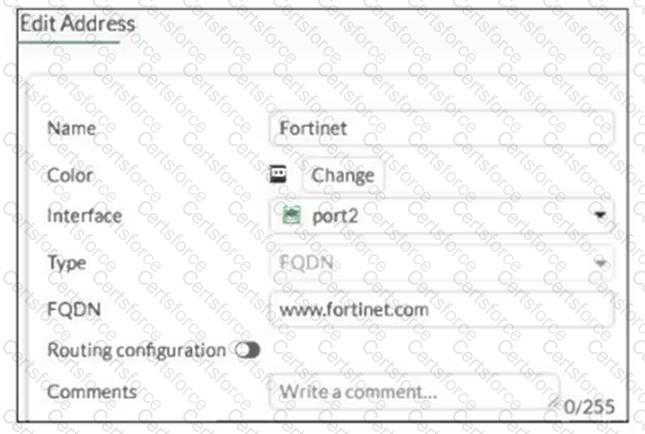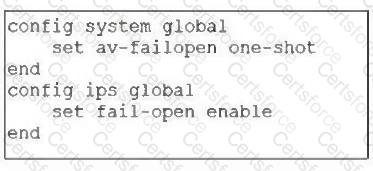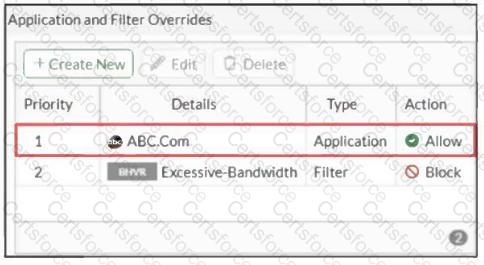Refer to the exhibit.

An administrator has created a new firewall address to use as the destination for a static route.
Why is the administrator not able to select the new address in the Destination field of the new static route?
You have created a web filter profile named restrict_media-profile with a daily category usage quota.
When you are adding the profile to the firewall policy, the restrict_media-profile is not listed in the available web profile drop down.
What could be the reason?
Refer to the exhibit.

Based on this partial configuration, what are the two possible outcomes when FortiGate enters conserve mode? (Choose two.)
What is the primary FortiGate election process when the HA override setting is enabled?
An administrator notices that some users are unable to establish SSL VPN connections, while others can connect without any issues.
What should the administrator check first?
Refer to the exhibit.

An administrator has configured an Application Overrides for the ABC.Com application signature and set the Action to Allow. This application control profile is then applied to a firewall policy that is scanning all outbound traffic. Logging is enabled in the firewall policy. To test the configuration, the administrator accessed the ABC.Com web site several times.
Why are there no logs generated under security logs for ABC.Com?
Which two statements are correct when FortiGate enters conserve mode? (Choose two.)
Refer to the exhibit.

As an administrator you have created an IPS profile, but it is not performing as expected. While testing you got the output as shown in the exhibit.
What could be the possible reason of the diagnose output shown in the exhibit?
What are three key routing principles in SD-WAN? (Choose three.)
Which statement correctly describes NetAPI polling mode for the FSSO collector agent?